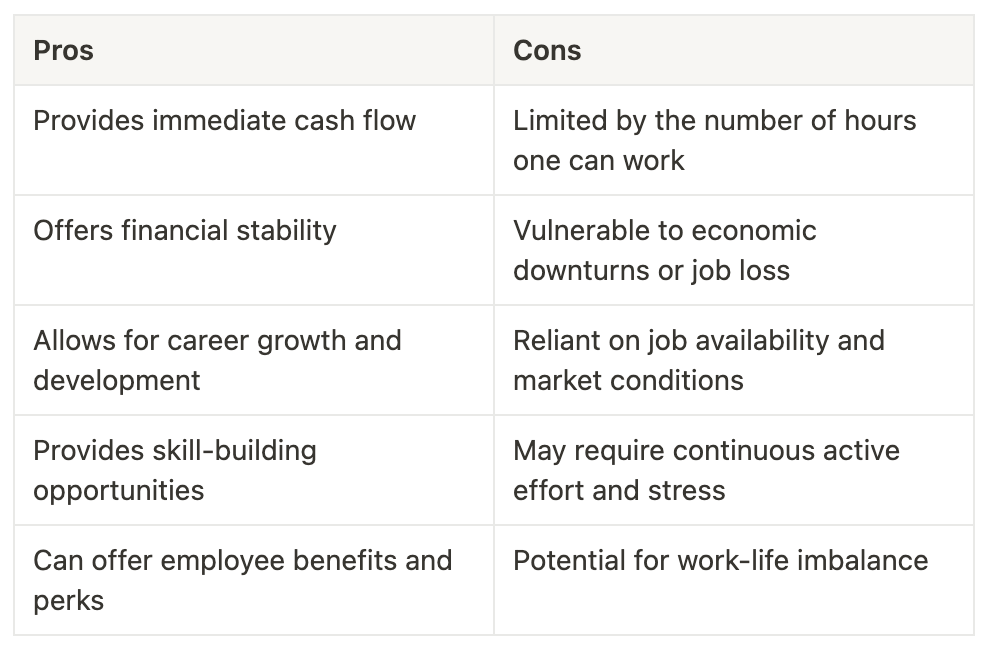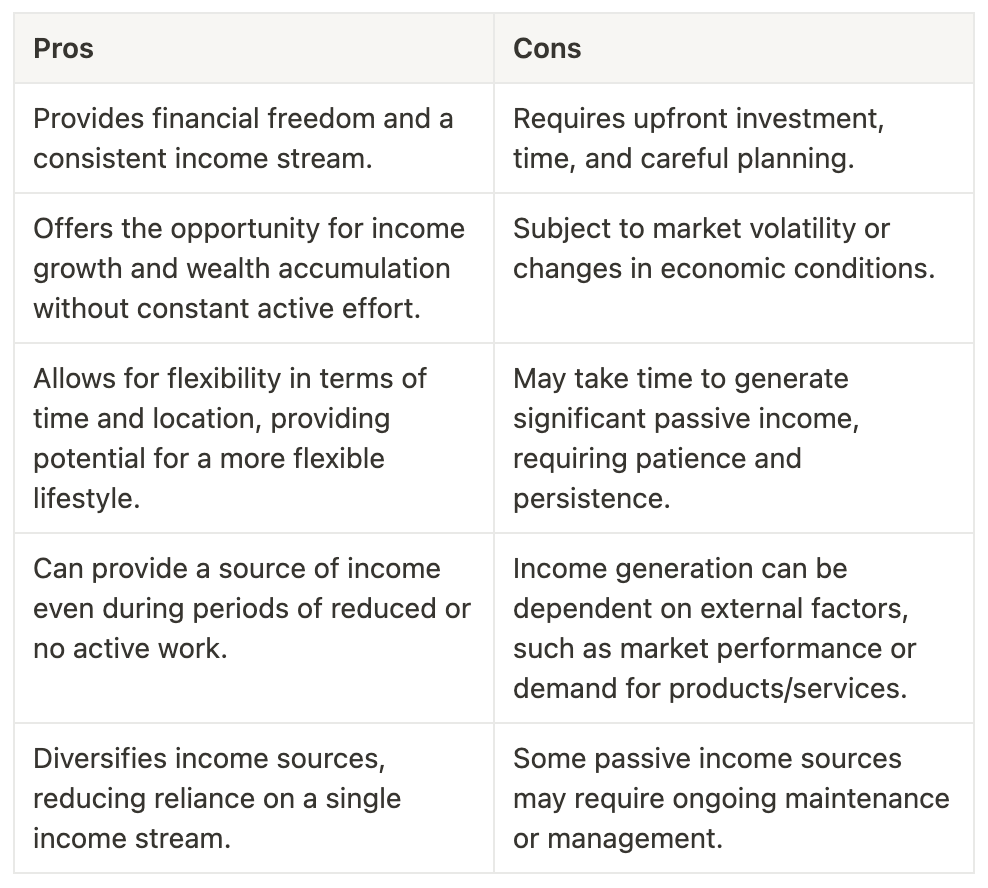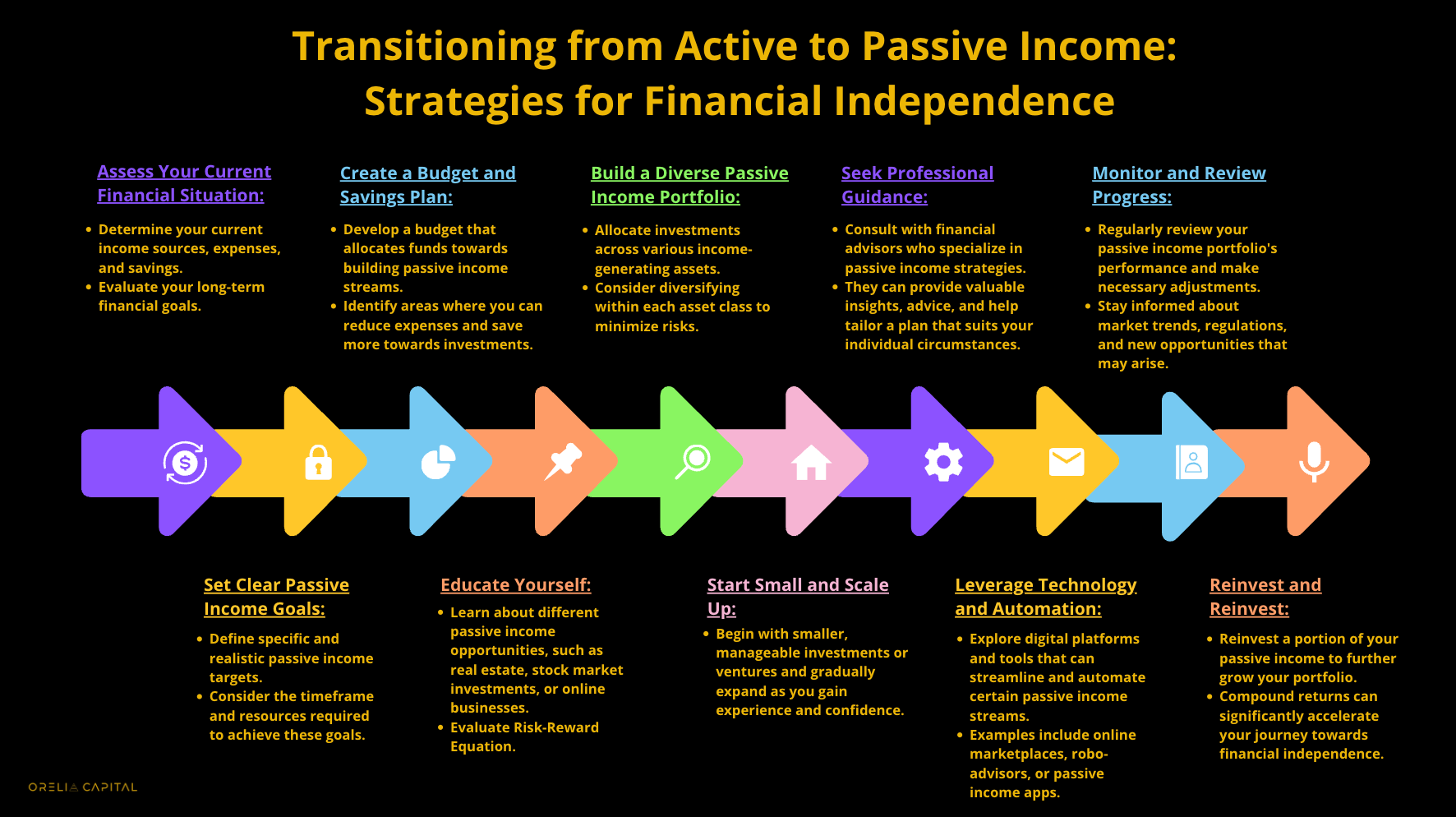The Key to Financial Freedom: Understanding Active and Passive Income

Introduction to Active and Passive Income: Understanding the Basics
- Income can be categorized into two primary types: active and passive. Understanding the basics of these income types is crucial for achieving financial stability and freedom.
- Active income is derived from direct participation in employment, business activities, or professional services. It involves exchanging time, skills, and effort for monetary compensation.
- Passive income, on the other hand, is generated from sources that require less direct involvement or active effort. It is often referred to as "money working for you", as it can be earned even when you're not actively working.
Active Income: Exploring Different Sources and Examples
Salary and Wages:
- Traditional employment where individuals receive a regular salary or hourly wages for their services.
- This includes jobs in various sectors such as healthcare, education, technology, finance, and more.
Self-Employment and Freelancing:
- Individuals who work for themselves and provide services or expertise to clients.
- Examples include freelance writers, consultants, graphic designers, photographers, and independent contractors.
Business Profits:
- Owning and operating a business that generates income through selling products or services.
- Small businesses, startups, and entrepreneurial ventures fall under this category.
Commissions and Sales:
- Professionals who earn a percentage-based commission on sales they make.
- This includes sales representatives, real estate agents, insurance brokers, and affiliate marketers.
Professional Services:
- Income generated through specialized professional services such as doctors, lawyers, accountants, architects, and engineers.
- These professionals provide expertise and charge fees for their services.
Pros and Cons of Active Income: Assessing the Benefits and Limitations

Passive Income: Types and Strategies for Generating Passive Income
Rental Properties:
- Invest in residential or commercial properties and generate passive income through rental payments.
- Consider factors such as location, property management, and rental market demand.
Dividend Stocks:
- Invest in stocks of companies that regularly distribute dividends to shareholders.
- Focus on established companies with a track record of consistent dividend payments.
Bonds and Fixed Income Investments:
- Invest in government or corporate bonds, which provide regular interest payments.
- Consider diversifying your bond portfolio to manage risk.
Real Estate Investment Trusts (REITs):
- Invest in REITs, which are companies that own and manage income-generating real estate properties.
- REITs allow for indirect real estate investment with potential regular dividends.
Royalties:
- Explore intellectual property opportunities such as publishing books, creating music, or patenting inventions.
- Understand licensing agreements and royalties structures to ensure fair compensation for your creative works.
- Consider partnering with agents or publishing houses to market and distribute your intellectual property effectively.
Business Ventures:
- Start a business or invest in existing businesses that generate passive income.
- Conduct market research to identify profitable niches and develop a solid business plan.
- Leverage technology and automation to minimize active involvement and maximize passive income potential.
Pros and Cons of Passive Income: Evaluating the Advantages and Challenges

Tax Implications: How Active and Passive Income are Taxed Differently
Active Income Taxation:
- Active income is subject to various taxes, including federal income tax, state income tax, and payroll taxes (such as Social Security and Medicare taxes).
- The tax rates for active income are typically progressive, meaning higher income levels are taxed at higher rates.
- Active income is generally taxed at ordinary income tax rates, ranging from lower tax brackets to the highest marginal tax rate.
Passive Income Taxation:
- Passive income is subject to different tax rules and may enjoy certain tax advantages.
- Passive income can be subject to lower tax rates, such as long-term capital gains rates, for qualifying investments held for more than a year.
- Passive losses from certain investments can be used to offset passive income, reducing the overall taxable income.
Self-Employment Tax:
- Individuals who earn active income through self-employment, such as freelancers or business owners, are subject to self-employment tax.
- Self-employment tax includes both the employer and employee portions of Social Security and Medicare taxes, resulting in a higher overall tax burden.
Tax Planning Considerations:
- Understanding the tax implications of active and passive income is essential for effective tax planning.
- It's crucial to consult with a tax professional to optimize tax efficiency, identify deductions, and take advantage of available tax benefits.
- Properly structuring passive income investments and utilizing tax-advantaged accounts (such as IRAs or 401(k)s) can help minimize tax liabilities.
Creating Multiple Streams of Income: Balancing Active and Passive Sources
Creating Multiple Streams of Income: Balancing Active and Passive Sources
Assessing the Importance of Multiple Streams of Income:
- Why relying solely on a single income source can be risky and limiting.
- The benefits of diversifying income streams for financial stability and resilience.
Identifying Active and Passive Income Opportunities:
- Evaluating your current active income sources and exploring additional opportunities.
- Researching passive income options that align with your skills, interests, and financial goals.
Balancing Active and Passive Income:
- Understanding the time commitment and effort required for active income sources.
- Identifying passive income sources that can generate income with minimal active involvement.
Developing a Strategy:
- Setting income goals and determining the ideal active to passive income ratio.
- Creating a step-by-step plan to build and diversify income streams gradually.
Exploring Active Income Sources:
- Maximizing earning potential in your current job or profession.
- Considering side hustles, freelance work, or consulting opportunities for additional active income.
Investing in Passive Income:
- Researching different passive income options, such as real estate, stocks, or peer-to-peer lending.
- Weighing the risks, potential returns, and required investment for each passive income avenue.
Building Passive Income Assets:
- Acquiring rental properties or investing in real estate investment trusts (REITs).
- Building a diversified investment portfolio with dividend-paying stocks, bonds, or index funds.

In conclusion, understanding the differences between active and passive income is crucial for financial success. Individuals can achieve greater financial independence and security by exploring various income sources, considering tax implications, and carefully building passive income assets. Remember to analyze your circumstances and seek professional guidance to optimize your income strategy.

We hope you enjoyed this edition of our newsletter. If you found it helpful, please consider sharing it with others who might benefit from this information.
At Orelia Capital, we believe that feedback is a gift. Your feedback can help us improve our content and provide more value to our readers.





